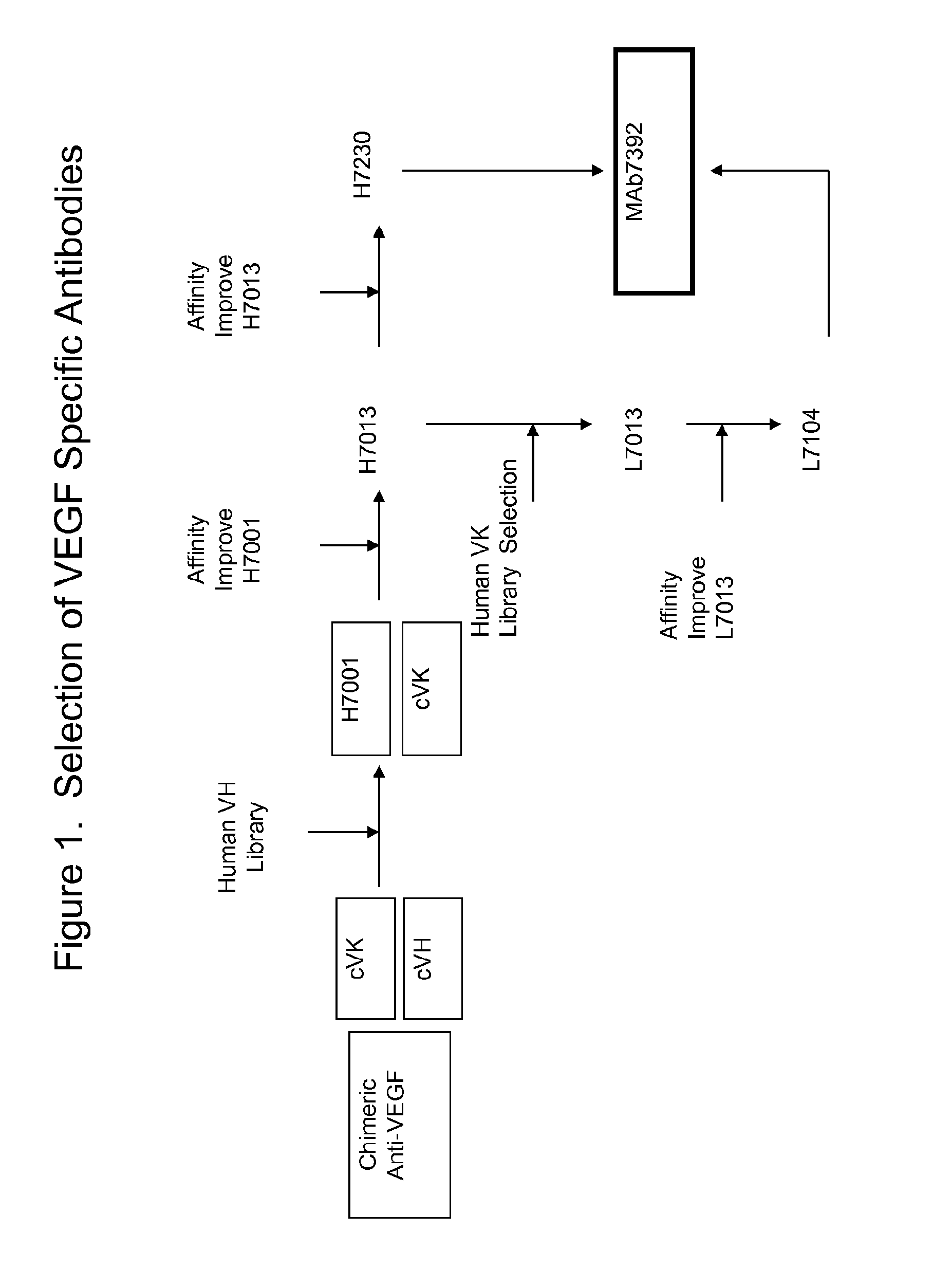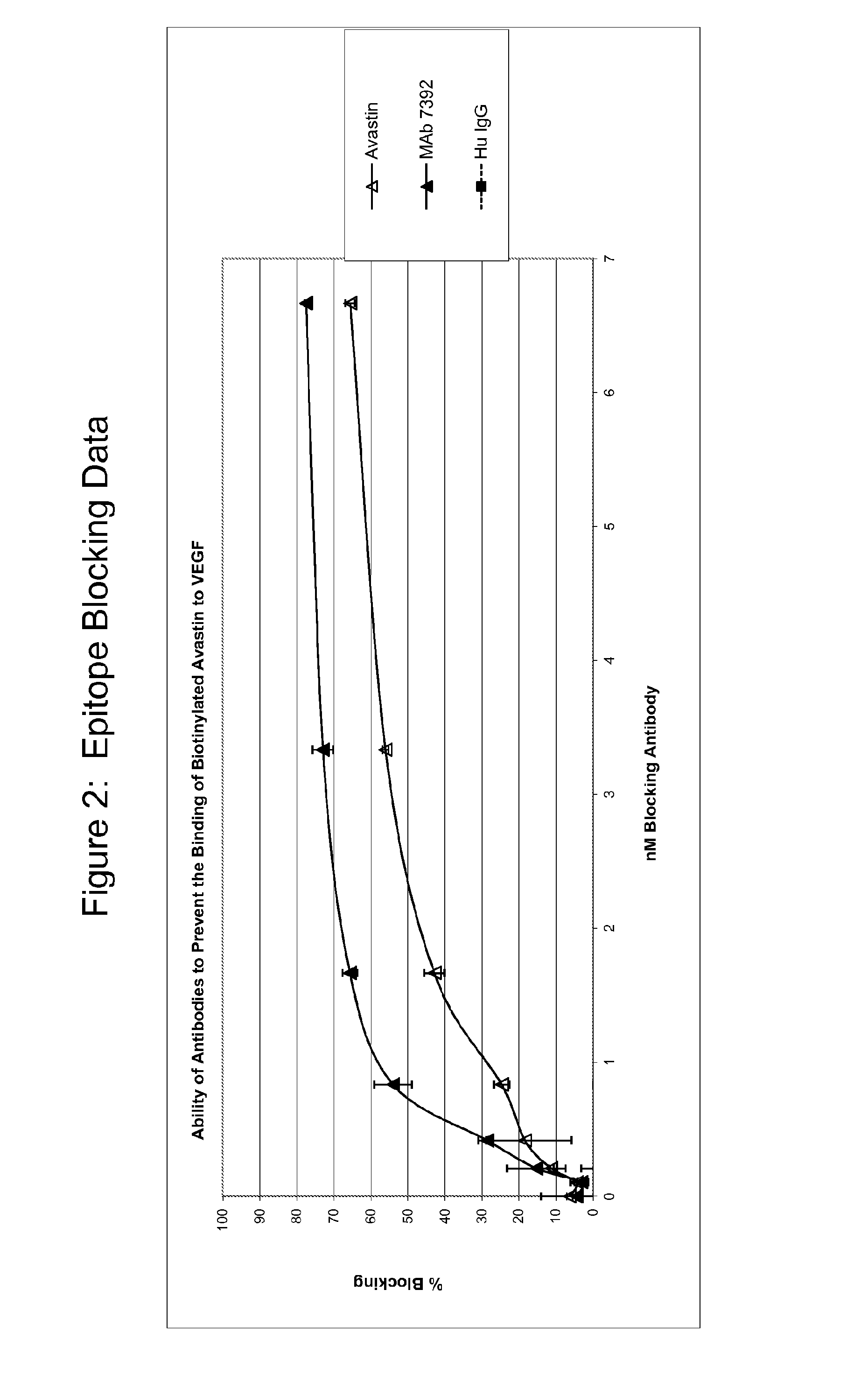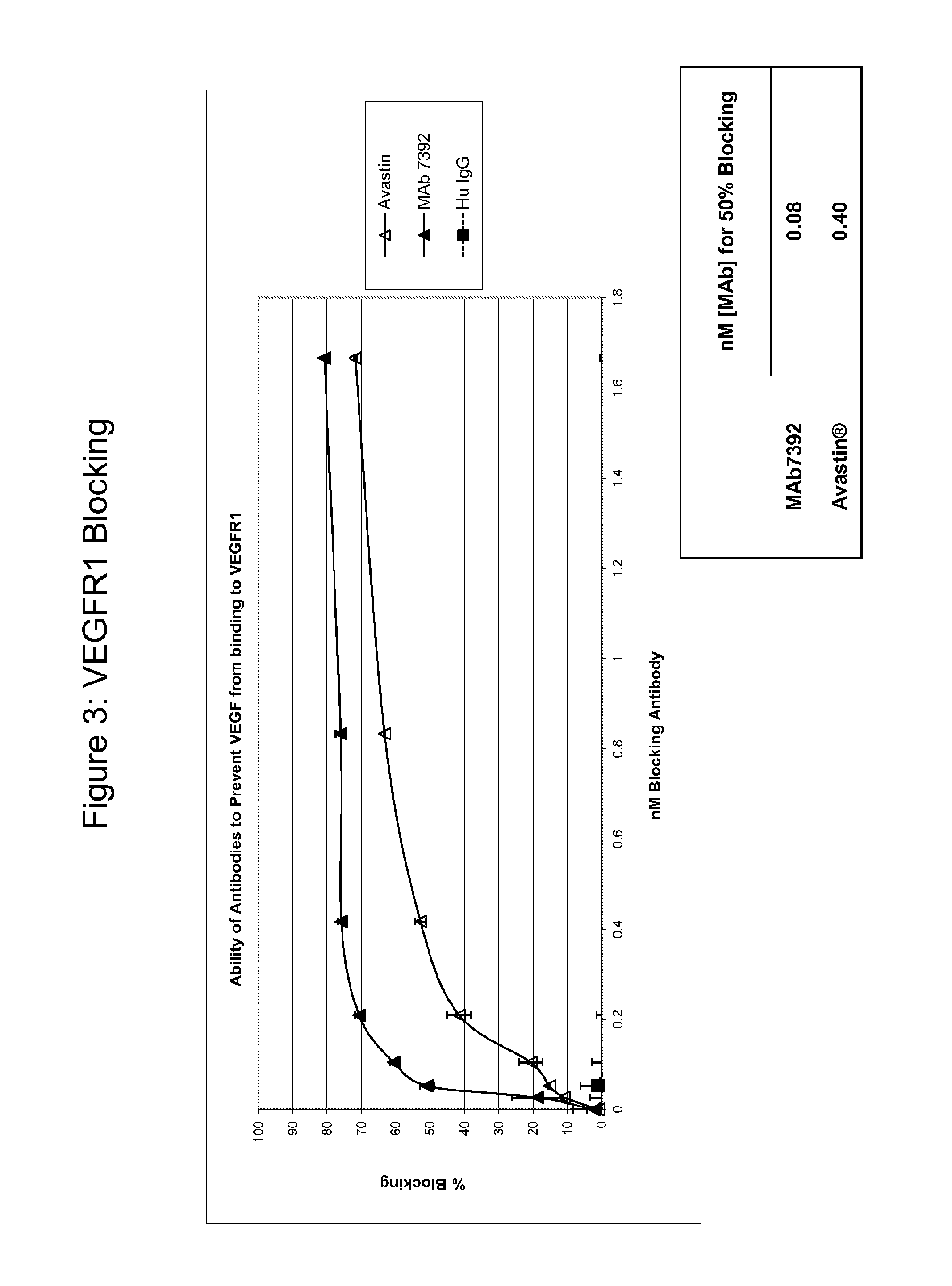Anti-VEGF antibodies and uses thereof
an anti-vegf antibody and anti-vegf technology, applied in the field of new antivegf antibodies, can solve the problems of decreased affinity for the target protein, less effective, and increased immunogenicity of humanized antibodies
- Summary
- Abstract
- Description
- Claims
- Application Information
AI Technical Summary
Benefits of technology
Problems solved by technology
Method used
Image
Examples
example 1
Selection and Characterization of MAb 7392 Anti-VEGF Antibody
[0276]The VH and VK genes from mouse anti-VEGF antibody A.4.6.1 were engineered into an Ig-H and Ig-K in vaccinia virus so that they could be expressed as a chimeric antibody with a human IgG1 heavy chain constant region and a human kappa light chain constant region.
[0277]The chimeric, VEGF-specific immunoglobulin light chain (Ig-L) was screened in combination with the human immunoglobulin heavy chain (Ig-H) mini-libraries. Thus, in a single well there were nominally 100-1000 distinct VH / VL combinations. Each assay well contained about 100,000 cells that were infected at a multiplicity of infection (moi)=1 for Ig-H and Ig-K.
[0278]Following incubation for 72-96 hr, culture supernatants were sampled and tested by ELISA for capacity to bind to VEGF that had been coated onto an ELISA plate. Mini Ig-H libraries corresponding to positive wells were sampled from the master plate and re-plated at limiting dilution (e.g., 10 pfu / we...
example 2
Biacore Data
[0300]MAb7392 was tested by Biacore for affinity. VEGF was immobilized on the chip. Bevacizumab (commercially known as Avastin®) and MAb7392 were passed over VEGF or control surface at varying concentrations. Data was fit with a bivalent model for affinity determination. As shown in Table 2, the affinity measured by Biacore is superior to that of bevacizumab.
[0301]
TABLE 2Biacore affinity values for VEGF antibodies.Affinity (nM)MAb73920.91Bevacizumab3.9
example 3
[0302]MAb7392 and bevacizumab share an epitope on VEGF. This was determined by the ability of MAb7392 to prevent the binding of bevacizumab to VEGF. Briefly, titrated MAb7392 and biotinylated bevacizumab were added to a VEGF-coated plate. Any biotinylated bevacizumab able to bind was detected with Strep-HRP. Blocking ability was proportional to affinity to VEGF. As shown in FIG. 2, MAb 7392 was able to block the binding of biotinylated bevacizumab to VEGF better than bevacizumab could. This demonstrates the conservation of epitope specificity and increased affinity of MAb 7392.
PUM
| Property | Measurement | Unit |
|---|---|---|
| dissociation constant | aaaaa | aaaaa |
| dissociation constant | aaaaa | aaaaa |
| dissociation constant | aaaaa | aaaaa |
Abstract
Description
Claims
Application Information
 Login to View More
Login to View More - R&D
- Intellectual Property
- Life Sciences
- Materials
- Tech Scout
- Unparalleled Data Quality
- Higher Quality Content
- 60% Fewer Hallucinations
Browse by: Latest US Patents, China's latest patents, Technical Efficacy Thesaurus, Application Domain, Technology Topic, Popular Technical Reports.
© 2025 PatSnap. All rights reserved.Legal|Privacy policy|Modern Slavery Act Transparency Statement|Sitemap|About US| Contact US: help@patsnap.com



